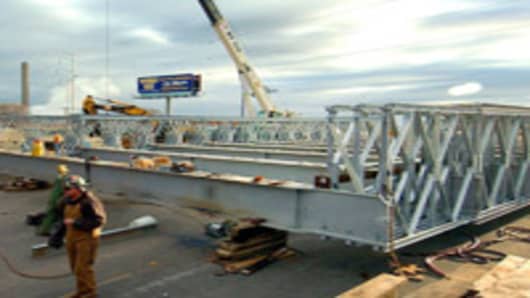As the economic slowdown peters out and recovery shoots arise, governments are still making good on their promises of infrastructure spending in their massive stimulus packages. And it may be just the time for investors to make money off these government-initiated projects.
Infrastructure investments can focus around traditional means like roads and rail, as well as on social building blocks such as hospitals and schools which are becoming increasingly open to investors through infrastructure funds.
Toll roads, ports and airports are at the higher risk end of infrastructure investment, according to Chris Elliott, CEO of Barclays Infrastructure Funds. At the lower risk end there's social infrastructure, which is the financing of government-sponsored projects like hospitals, schools, roads and courthouses, an area where Barclays Infrastructure Funds predominately act, Elliott added.
"Social infrastructure gets a very different risk and return profile from economic infrastructure for the investor," he said.
Governments around the world have gradually adopted models like a Private Finance Initiative to engage the private sector in building infrastructure. It is a model that sees investors contributing to a fund that has won the government contract to finance infrastructure. If enough money is raised for the construction and the project is completed successfully, the government pays a contractual fee which is then returned to the investor.
The Returns




